Dead Sea Scrolls... and stuff
First, the important news: my strings broke today while I practiced a new song I wrote down south. While the breaking part is a bummer, the fact that they have lasted as long as they did is a great thing!
To all guitar players suffering from breakage, buy D'addario XP. After this next set expires, I will be strapping on the Cleartones I have heard so much about.
I'd be lying if I said I was actually interested to see these things. I'm afraid I've always had a general disinterest in things that are very old or very dead. It's not that I can't appreciate the value of ancient relics and such, it's just that... well... ok, maybe I don't know how to appreciate them! I'm sure they deserve the attention though.
Regardless of my undeserving eyes, the rest of my family was quite interested in going to see these dead scrolls before they are locked up in Israel (and various other places) for good, due to their fragile state. I decided it was best to apply myself then, if we must see these old bits of parchment, so as not to be ungrateful for the opportunity that I know many would have loved to take in my place. So here's what we found (most pictures taken with my phone, so sorry about the quality):
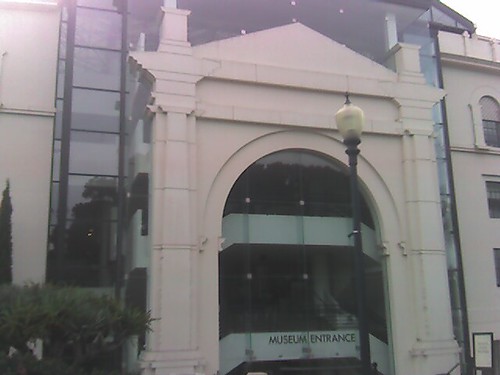
It's a fairly small museum, but it's a pleasant one.
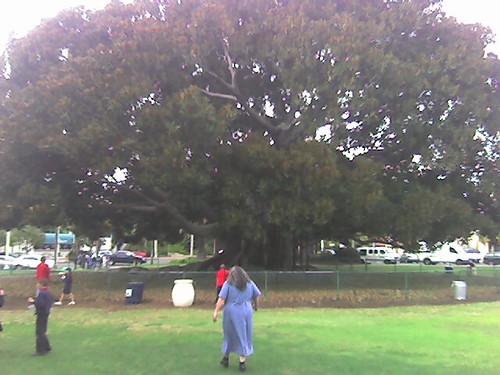
Before heading in, we took notice of this marvelous "Fig" tree. Now THIS is interesting... and still living! It was a pretty massive specimen.
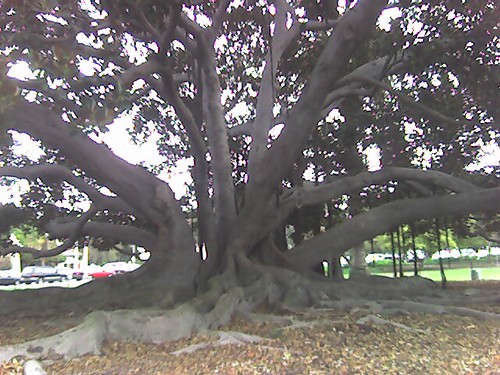
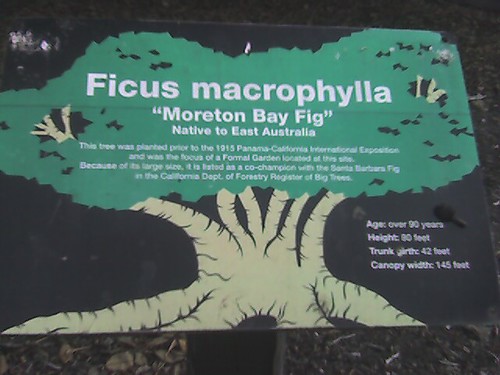
After spending some time admiring this big tree, we made our way inside the museum to find us some scrolls. The security guards were kind enough to inform us that no electronic devices were permitted to be on and that our cell networks need to be turned off as well. There were no pictures allowed either. I tried to sneak a picture at one point and a lady walked up to me and told me to shut off my phone or she'd pluck my eyes out and confiscate my phone! (Ok... that didn't really happen)
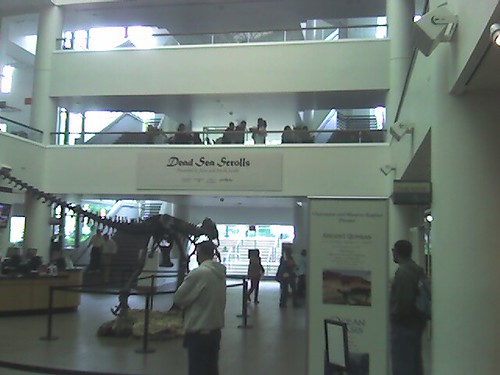
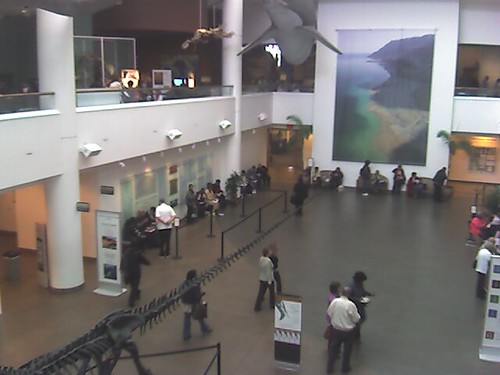
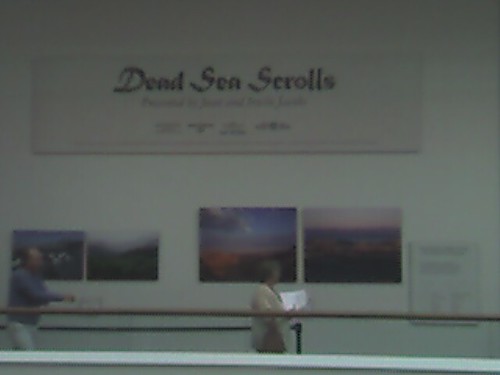
This was the first entrance to the top level of the exhibit. You spend your time, roughly thirty minutes, looking a pictures of Israel and reading explanations of where the scrolls came from (the Dead Sea!) and their significance. They also spend a good deal of your time attempting to convince you that it took millions of years to form the Dead Sea's unique sea bed and that San Diego is remarkably similar to Israel. This felt like the longest part of the exhibit.
And then we came upon it!
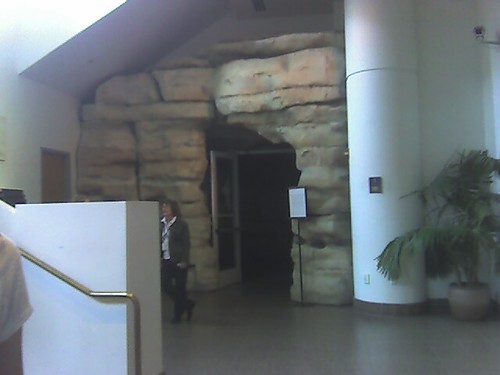
This is where they keep the scrolls. No camera's allowed inside :(. I wanted to sneak some shots but security cameras are bred in hordes in this museum!
They gave us these phone-like, wireless, listening units that had number pads on them. If you punched in the corresponding number of the particular item being exhibited inside the... cave... a message would play with the details concerning the display. This seemed to work well, except when you get fast at it... suddenly everything is in Spanish. Push the numbers sllloooowwwwlllyyy.
We made our way around inside and learned some interesting things. I did listen to every exhibit display message so as not to be left wondering if I had skipped the one that contained something important.
The Dead Sea scrolls do contain some Biblical writings, most notably Isaiah, but contain many more documents that carry other significance, such as Biblical commentaries, cultural reports, songs, and legal papers. Obviously, unless you have interest in these sorts of documents, learning about them can try your patience a bit.
There was also a lot of information, relics, and papers regarding Qumran, the "settlement" that was just above where the Dead Sea Scrolls were discovered.
Qumran was destroyed by Roman invasion but there are still remains there that archaeologists find most interesting. Pots, inkwells, furniture, and a fortune's worth of coin! Based on the research done on Qumran, many scholars believe that there were scribes at Qumran that were directly responsible for the Dead Sea Scrolls. They hid the scrolls, among other things, in the caves below Qumran when they feared an attack from the Romans.
Of the scrolls, the most interesting were Isaiah and Enoch.
The Isaiah text is almost entirely complete and predates any known written copy of the book. And since it has been available to scholars since the 50's, it is odd that it has not been utilized in modern translations of the Bible as it is long been considered to be more accurate than the Masoretic version which it predates by over 1,000 years.
Interestingly though, this turns out to be of little importance because scholars found that, after careful comparison, the two texts are nearly identical with no substantial differences at all! This stands as a very useful fact to argue against the common accusation that the Bible has been corrupted or poorly interpreted throughout the ages (often an argument made by Mormons and other offshoot Christian or Jewish sects). Scholars also find this interesting because it makes Isaiah one of the most well preserved texts in the history of known literature.
Gleason Archer, a respected Scholar, wrote,
"Even though the two copies of Isaiah discovered in Qumran Cave 1 near the Dead Sea in 1947 were a thousand years earlier than the oldest dated manuscript previously known (A.D. 980), they proved to be word for word identical with our standard Hebrew Bible in more than 95 percent of the text. The five percent of variation consisted chiefly of obvious slips of the pen and variations in spelling."
Enoch is also quite an interesting find. Though it is just a fragment, it is interesting that it was found amongst so many pieces of what we would call "canon". Many scholars also claim that Jude quotes from this very book in Jude 14 and 15. Though the book of Enoch is rejected as part of our scriptures, I found it very interesting. The fragment that was discovered reads as follows (thanks ibiblio!):
Speaking of giants....
They claim that Goliath is on record in the scrolls as being only about 6'7", contrary to what our Bible claims his height was. They say that it was due to an inaccuracy in later texts that people thought Goliath was a giant. It seems unlikely to me, however, that the Israelite army was scared stiff of a 7' giant :).
Another thing that was somewhat humorous was that everything in the exhibit was dated with the acronyms "BCE" and "CE" (rather than "BC" and "AD"). And under most of the exhibit items were little labels saying that this was the new "official" dating system.
We made our way around inside and learned some interesting things. I did listen to every exhibit display message so as not to be left wondering if I had skipped the one that contained something important.
The Dead Sea scrolls do contain some Biblical writings, most notably Isaiah, but contain many more documents that carry other significance, such as Biblical commentaries, cultural reports, songs, and legal papers. Obviously, unless you have interest in these sorts of documents, learning about them can try your patience a bit.
There was also a lot of information, relics, and papers regarding Qumran, the "settlement" that was just above where the Dead Sea Scrolls were discovered.
Qumran was destroyed by Roman invasion but there are still remains there that archaeologists find most interesting. Pots, inkwells, furniture, and a fortune's worth of coin! Based on the research done on Qumran, many scholars believe that there were scribes at Qumran that were directly responsible for the Dead Sea Scrolls. They hid the scrolls, among other things, in the caves below Qumran when they feared an attack from the Romans.
Of the scrolls, the most interesting were Isaiah and Enoch.
The Isaiah text is almost entirely complete and predates any known written copy of the book. And since it has been available to scholars since the 50's, it is odd that it has not been utilized in modern translations of the Bible as it is long been considered to be more accurate than the Masoretic version which it predates by over 1,000 years.
Interestingly though, this turns out to be of little importance because scholars found that, after careful comparison, the two texts are nearly identical with no substantial differences at all! This stands as a very useful fact to argue against the common accusation that the Bible has been corrupted or poorly interpreted throughout the ages (often an argument made by Mormons and other offshoot Christian or Jewish sects). Scholars also find this interesting because it makes Isaiah one of the most well preserved texts in the history of known literature.
Gleason Archer, a respected Scholar, wrote,
"Even though the two copies of Isaiah discovered in Qumran Cave 1 near the Dead Sea in 1947 were a thousand years earlier than the oldest dated manuscript previously known (A.D. 980), they proved to be word for word identical with our standard Hebrew Bible in more than 95 percent of the text. The five percent of variation consisted chiefly of obvious slips of the pen and variations in spelling."
Enoch is also quite an interesting find. Though it is just a fragment, it is interesting that it was found amongst so many pieces of what we would call "canon". Many scholars also claim that Jude quotes from this very book in Jude 14 and 15. Though the book of Enoch is rejected as part of our scriptures, I found it very interesting. The fragment that was discovered reads as follows (thanks ibiblio!):
"12. ...But you have changed your works, 13. [and have not done according to his command, and tran]sgressed against him; (and have spoken) haughty and harsh words, with your impure mouths, 14. [against his majesty, for your heart is hard]. You will have no peace. EnThis strange bit of text is very familiar if you've done your homework on Nephilim in the Bible. Otherwise, it's just a bunch of nonsense. But the startling number of 3,000 cubits is quite intriguing... maybe the Israelites weren't lying when they said they'd found "giants" in the land.a I iii 13. [They (the leaders) and all ... of them took for themselves] 14. wives from all that they chose and [they began to cohabit with them and to defile themselves with them]; 15. and to teach them sorcery and [spells and the cutting of roots; and to acquaint them with herbs.] 16. And they become pregnant by them and bo[re (great) giants three thousand cubits high ...]"
Speaking of giants....
They claim that Goliath is on record in the scrolls as being only about 6'7", contrary to what our Bible claims his height was. They say that it was due to an inaccuracy in later texts that people thought Goliath was a giant. It seems unlikely to me, however, that the Israelite army was scared stiff of a 7' giant :).
Another thing that was somewhat humorous was that everything in the exhibit was dated with the acronyms "BCE" and "CE" (rather than "BC" and "AD"). And under most of the exhibit items were little labels saying that this was the new "official" dating system.
Finally, about half-way through, I saw a note saying "... to learn more about the new dating system, press 42...". So I did:
"Due to the overtly Christian nature of the previous dating system, BC, meaning "Before Christ" and, AD, translated from latin as "the day of our Lord", scholars have adopted a neutral dating system that peoples of all religions and races can use. BCE stands for "Before Common Era" and CE for "Common Era". Other than the acronym, both dating systems are identical." (not their precise wording)No matter how you slice it though, our whole dating system centers around the birth of Christ. But, I suppose you can use whatever acronyms you want if it makes you feel better ;).
So that's the Dead Sea Scrolls as best as I remember them. Afterwards, we walked around the museum a bit before eventually departing for Cabrillo "National Monument" (it's just a lighthouse on a hill). Here's some pics.
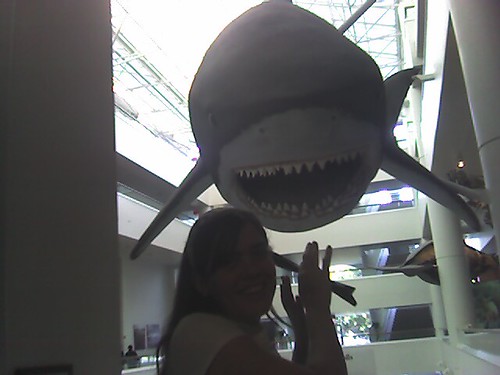
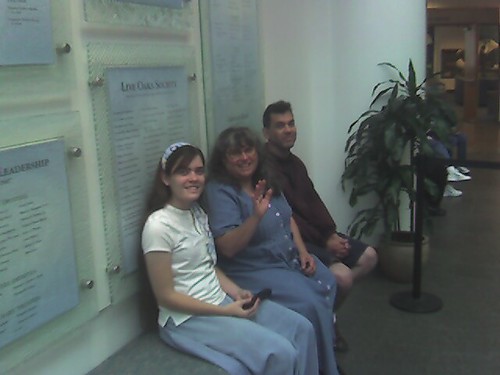
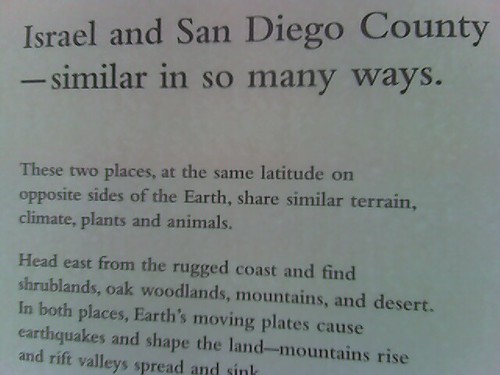
(yeah right)
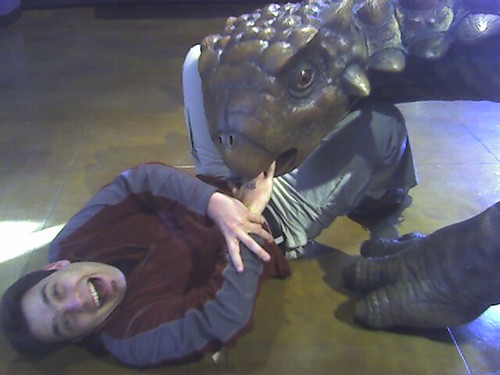
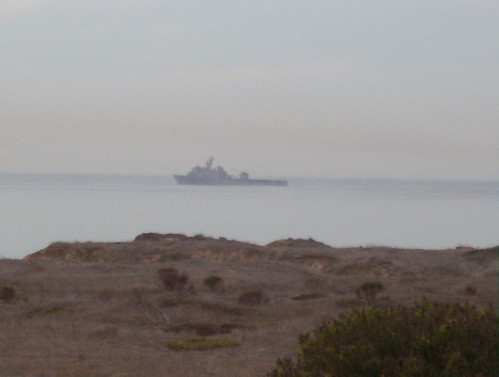
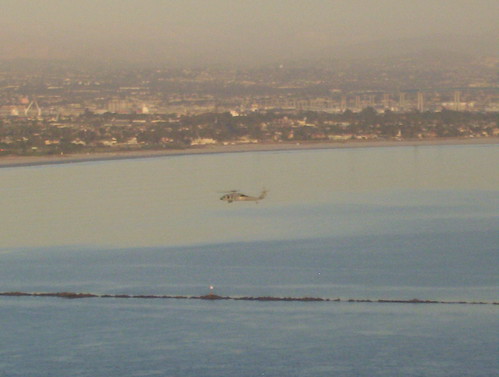


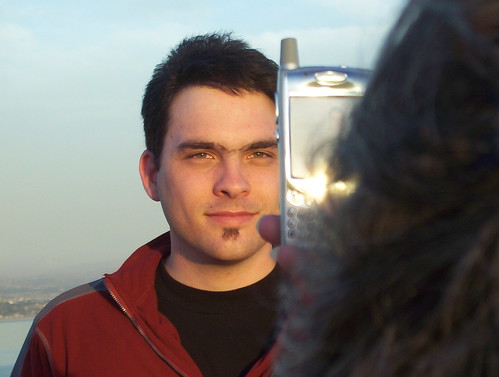
(behind the scenes)
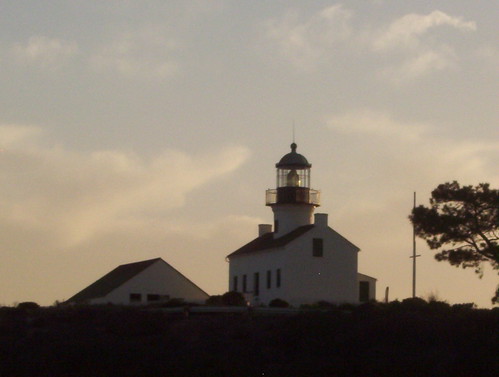
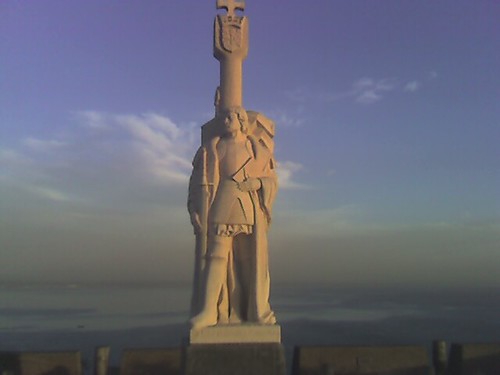
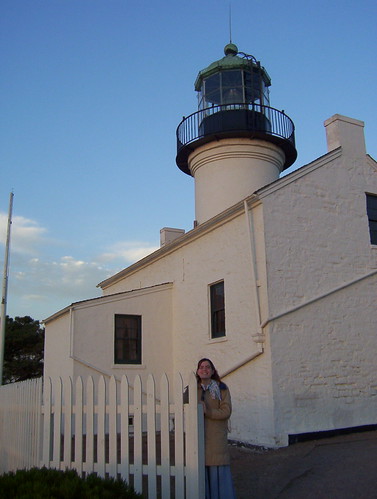
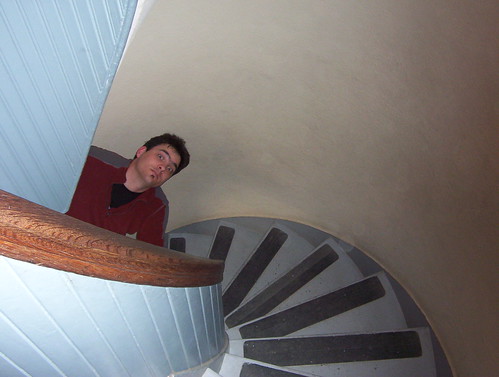
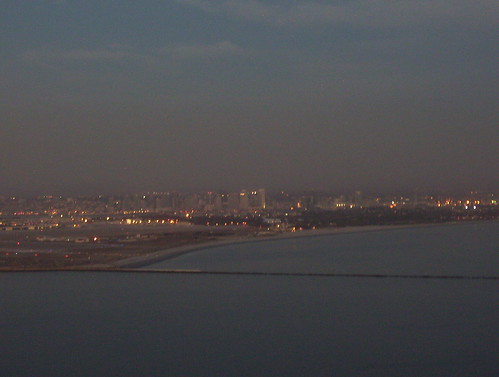
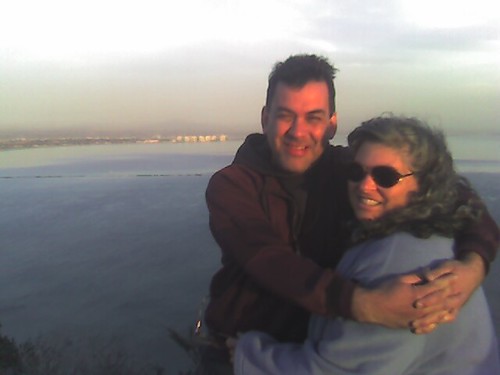
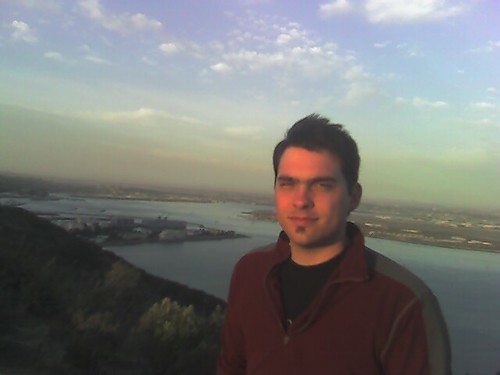
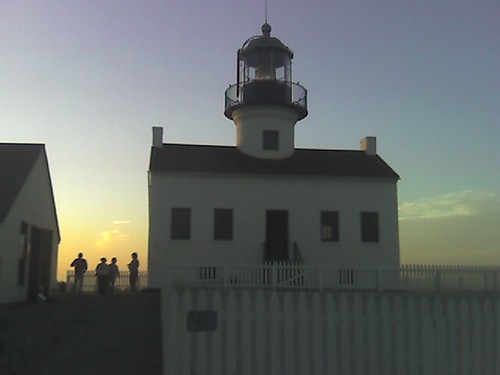

(me and my sister)
And like all good days, this one ended with Ice-Cream:

Stay tuned at the family blog for a more complete report!

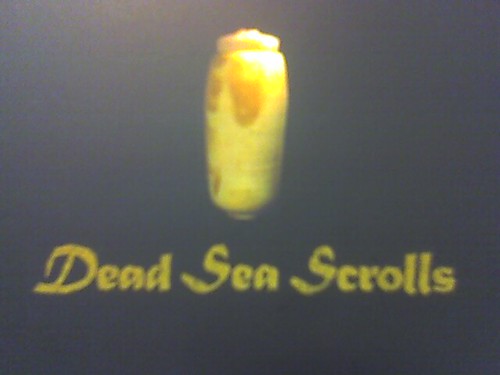



No comments:
Post a Comment